Tag archives: Nobel prize
When will Japan get its next physics Nobel prize?

Thirteen and counting: Hikaru Kawamura wonders when Japan will get its next Nobel Prize for Physics.
By Matin Durrani in Osaka, Japan
Hikaru Kawamura, president of the Physical Society of Japan (JPS), handed me a brochure as we sat down in his office on the fifth floor of the Department of Earth and Space Science at Osaka University. Inside it were photographs of the 13 Japanese physicists who have won the Nobel Prize for Physics.
It’s an impressive list of people, starting with Hideki Yukawa, who won the 1949 prize for his theory of the nuclear force, and going all the way up to Takaaki Kajita who shared the 2015 prize for detecting atmospheric neutrino oscillations at the Super-Kamiokande underground lab. (They’re all men, of course, but that’s another story.)
However, Kawamura admitted to me during our 90-minute discussion, that he is “not optimistic” that Japan will be as prolific in terms of Nobel prizes in the future. Most Nobel laureates usually (though admittedly not always) win their awards for work done 20-30 years ago. So with Japanese physics these days being, as Kawamura puts it, “not so popular as it used to be”, how long will Japan have to wait for its next physics Nobel prize?
View all posts by this author | View this author's profile
How does LIGO detect gravitational waves?
By Hamish Johnston
This year’s physics Nobel prize has gone to three physicists who pioneered the LIGO observatory, which in 2015 made the first-ever detection of gravitational waves.
The LIGO detectors are famously capable of detecting changes in length smaller than one thousandth the diameter of a proton.
So how is this done?
View all posts by this author | View this author's profile
Nobel prize heralds new era of multimessenger astronomy
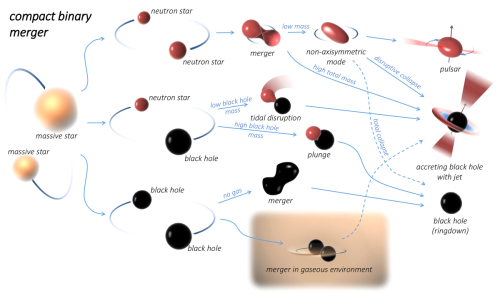
Brave new worlds: what LIGO–Virgo could see. Click on image to expand. (Courtesy: I Bartos and M Kowalski)
By Hamish Johnston
I think it’s safe to say that most Nobel-watchers were predicting a LIGO-related physics prize this year, and for very good reasons.
View all posts by this author | View this author's profile
Physicists take over the Big Easy

New Orleans: city with a view. (Courtesy: Tushna Commissariat)
By Sarah Tesh and Tushna Commissariat in New Orleans, Louisiana, US
It is that time of the year again when around 10,000 physicists gather for the American Physical Society (APS) March Meeting and this year we’re in the Big Easy. While yesterday was a jetlag-recovery day, it’s all kicking off today at the sprawling Ernest Morial Convention Center, where more than 9600 papers will be presented during the week.
Despite our sleep-deprived state yesterday, we played the traditional game of “spot the physicist” during our wanderings in the French Quarter. This was made particularly interesting with the simultaneous game of “spot the spring-breakers”. Relaxed, youthful students chatting loudly about their late-night escapades were a stark contrast to academics looking anxious and lost while over-burdened with poster tubes, suitcases and laptop bags.
View all posts by this author | View this author's profile
LIGO physicists favourites for Nobel prize, physics superstar tournament, and how long does it take to win a Nobel?
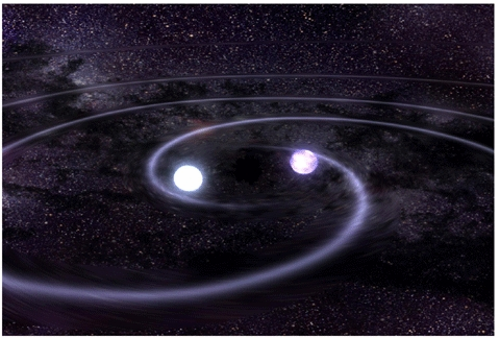
Prize winning: will the detection of gravitational waves win this year’s Nobel? (Courtesy: Caltech/MIT/LIGO Lab)
By Hamish Johnston
The first week of October is nearly upon us and the question on almost every physicist’s lips is “who will win this year’s Nobel Prize for Physics?”. The people’s favourite for 2016 seems to be the physicists who pioneered the LIGO gravitational-wave detectors. In February 2016 LIGO researchers announced that they had made the first ever detection of a gravitational wave – from two merging black holes. A few months later, a second detection was announced.
Normally, Nobel nominations are closed in January so it’s possible that LIGO missed the boat. However, both the first and second detections were actually made in 2015 – with the results subsequently published in 2016. So the LIGO pioneers could have been nominated before the deadline as the collaboration already knew it had detected gravitational waves. It’s all pure speculation, of course, as each year’s deliberations are kept top secret for 50 years.
So who could be claiming the prize for LIGO? Three people favoured by pundits are Rainer Weiss, Kip Thorne, and Ronald Drever. Drever and Weiss played crucial roles in designing and building LIGO, whereas Thorne calculated what gravitational waves would look like to the detector.
View all posts by this author | View this author's profile
Physics World talks to Spanish TV about migrating Nobel laureates
By Hamish Johnston
A few weeks ago I was in Germany for the 66th Lindau Nobel Laureate Meeting, where I moderated a “press talk” about migration and science. This was essentially a panel discussion that involved two chemistry Nobel laureates – Martin Karplus and Daniel Shechtman – and two early-career physicists: Winifred Ayinpogbilla Atiah from Ghana and Ana Isabel Maldonado Cid from Spain.
A Nobel view on scientific leadership
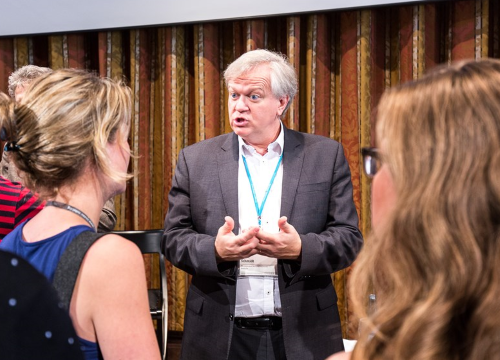
Brian Schmidt speaks to young scientists in Lindau. (Courtesy: Lindau Meeting)
By Alaina G Levine, at the Lindau Nobel Laureate Meeting in Germany
One of the best things about being at the 66th Lindau Nobel Laureate Meeting is that there are surprises around every corner. The organizers give you a programme, but you might not even realize the significance of an event until you are knee deep in it.
This morning, I attended one of four “Science Breakfasts” held this week, in which Nobel laureates and leaders in various industries share the stage and discuss topics of interest to the young scientists who have travelled from all over the world to participate in the meeting.
Over croissants and orange juice, the 2011 physics Nobel laureate Brian Schmidt took part in a lively discussion that itself was a mouthful: “Decoding science leadership: Developing capacity for leading innovation in a rapidly evolving 24/7 world with disruptive opportunities and challenges”.
View all posts by this author | View this author's profile
George Smoot on mapping the universe with gravity
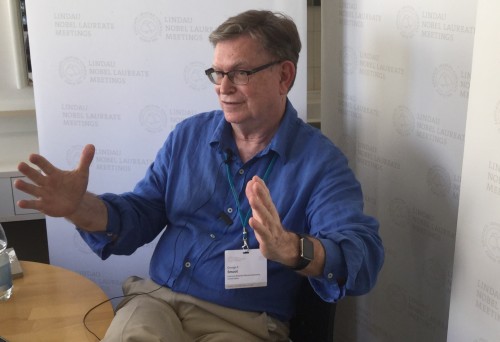
Measuring the universe: George Smoot enthuses about gravitational waves.
By Hamish Johnston at the Lindau Nobel Laureate Meeting in Germany
Yesterday I was in a fantastic session with George Smoot, who shared the 2006 Nobel Prize for Physics for discovering the anisotropy in the cosmic microwave background. He will be speaking today at the 66th Lindau Nobel Laureate Meeting about another important astronomical discovery, the first direct detection of gravitational waves that was made by LIGO in September 2015. Waves that were created by the merger of two unexpectedly large black holes.
Blue LEDs and a revolution in light
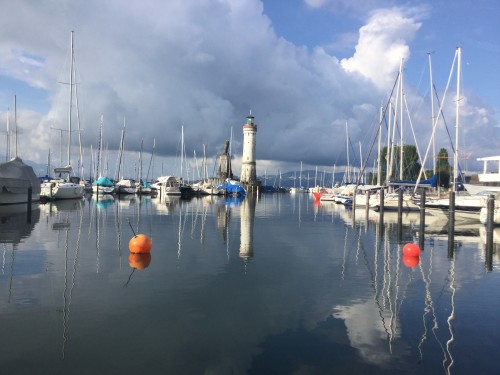
Morning in Lindau: great scenery and wonderful talks.
By Hamish Johnston at the Lindau Nobel Laureate Meeting in Germany
It has been a great morning of physics talks this morning here at the 66th Lindau Nobel Laureate Meeting. Hiroshi Amano, who shared the 2014 Nobel Prize for Physics for the development of the blue LED, spoke first about the practical aspects of his creation.
Electronic displays and low-energy lighting are two obvious applications for blue LEDs. Amano pointed out that LED lighting uses 1/8 the energy of incandescent bulbs and 1/2 that of fluorescent lights. But perhaps more importantly, he says that this low-energy operation means that light can be introduced to remote and poor parts of the world. This has the potential to boost education because it enables children in areas with no mains electricity to read and study at night.
View all posts by this author | View this author's profile
Talking about immigration with Nobel laureates in Lindau
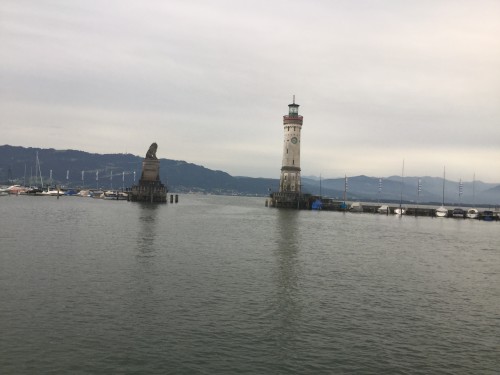
Lakeside view: Lindau’s harbour on Lake Constance.
By Hamish Johnston at the Lindau Nobel Laureate Meeting in Germany
I arrived in the German town of Lindau yesterday evening expecting it to be a sleepy little burg where I would struggle to find somewhere open to get a bite to eat. Instead I was greeted at the station by a cacophony of car horns and singing as Germany had just beat Slovakia and claimed its place in the next round of the Euro 2016 football tournament.
I’m here in the far south of Germany for the 66th Nobel Laureate Meeting. Tomorrow I will be hosting a “press talk” about how immigration continues to shape the scientific world. Last week’s momentous decision by the UK to leave the European Union is sure to come up in the panel discussion, which will include input from two chemistry Nobel laureates – Martin Karplus and Daniel Shechtman. I will also be joined on the panel by two early-career physicists: Winifred Ayinpogbilla Atiah from Ghana and Ana Isabel Maldonado Cid from Spain.